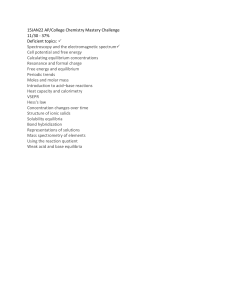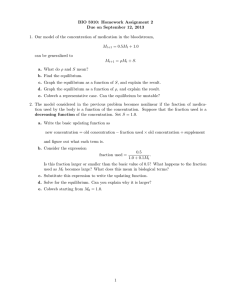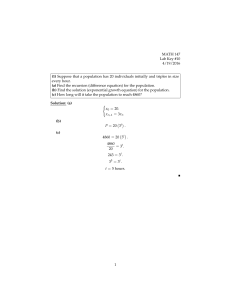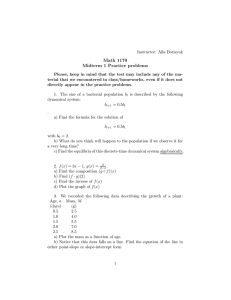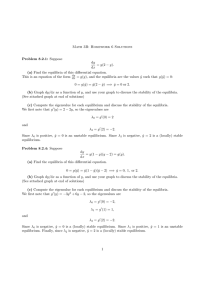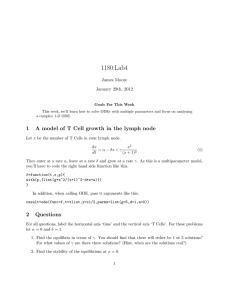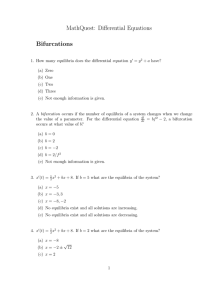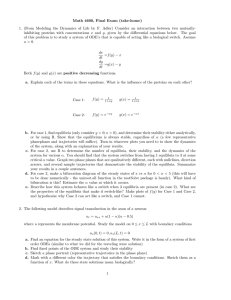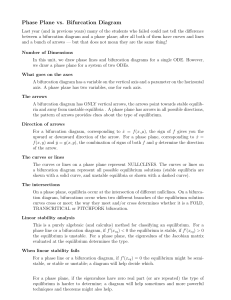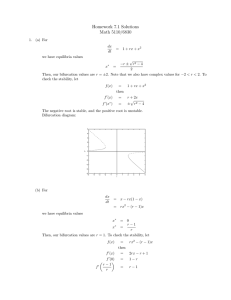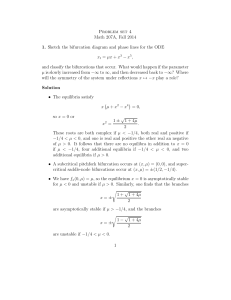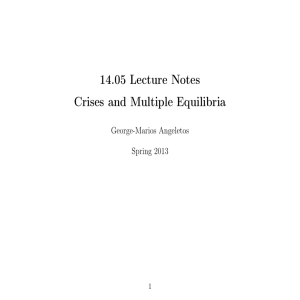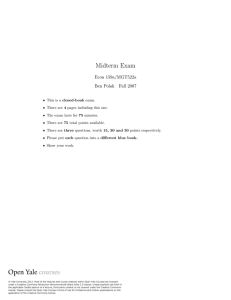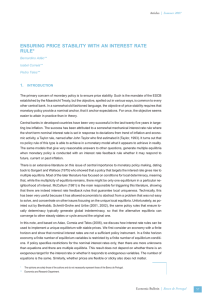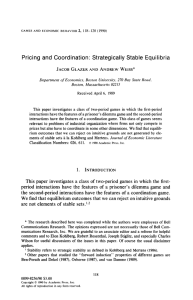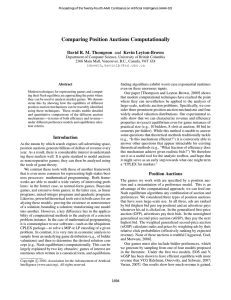Calculus for Biologists Lab Math 1180-002 Spring 2012
advertisement
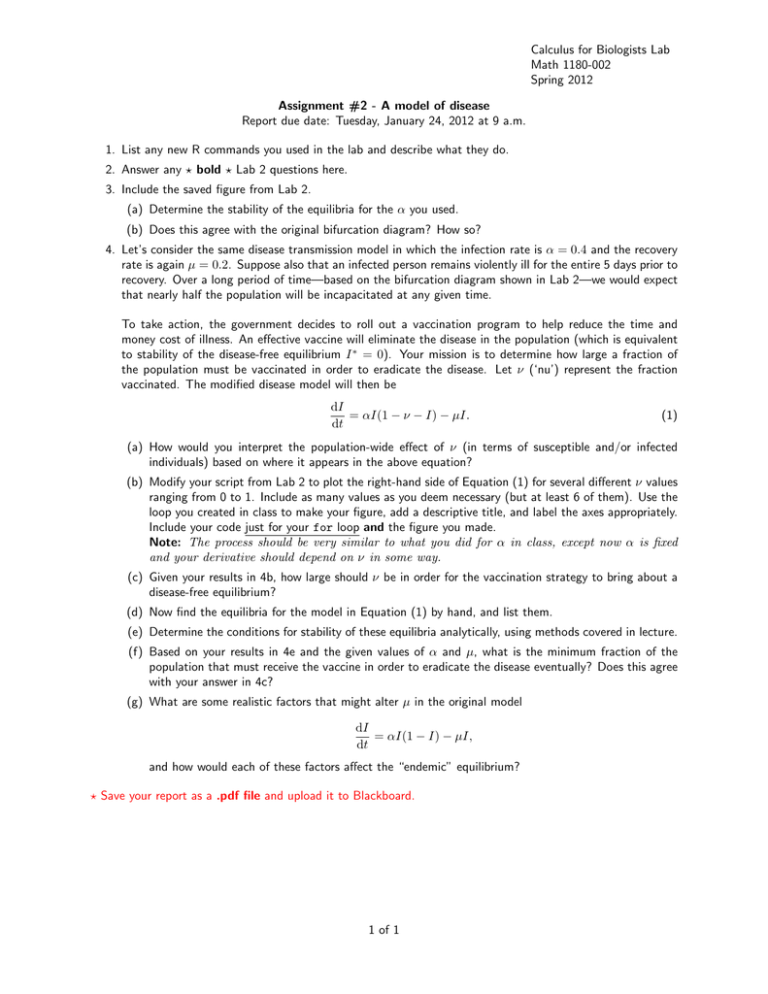
Calculus for Biologists Lab Math 1180-002 Spring 2012 Assignment #2 - A model of disease Report due date: Tuesday, January 24, 2012 at 9 a.m. 1. List any new R commands you used in the lab and describe what they do. 2. Answer any ? bold ? Lab 2 questions here. 3. Include the saved figure from Lab 2. (a) Determine the stability of the equilibria for the α you used. (b) Does this agree with the original bifurcation diagram? How so? 4. Let’s consider the same disease transmission model in which the infection rate is α = 0.4 and the recovery rate is again µ = 0.2. Suppose also that an infected person remains violently ill for the entire 5 days prior to recovery. Over a long period of time—based on the bifurcation diagram shown in Lab 2—we would expect that nearly half the population will be incapacitated at any given time. To take action, the government decides to roll out a vaccination program to help reduce the time and money cost of illness. An effective vaccine will eliminate the disease in the population (which is equivalent to stability of the disease-free equilibrium I ∗ = 0). Your mission is to determine how large a fraction of the population must be vaccinated in order to eradicate the disease. Let ν (‘nu’) represent the fraction vaccinated. The modified disease model will then be dI = αI(1 − ν − I) − µI. dt (1) (a) How would you interpret the population-wide effect of ν (in terms of susceptible and/or infected individuals) based on where it appears in the above equation? (b) Modify your script from Lab 2 to plot the right-hand side of Equation (1) for several different ν values ranging from 0 to 1. Include as many values as you deem necessary (but at least 6 of them). Use the loop you created in class to make your figure, add a descriptive title, and label the axes appropriately. Include your code just for your for loop and the figure you made. Note: The process should be very similar to what you did for α in class, except now α is fixed and your derivative should depend on ν in some way. (c) Given your results in 4b, how large should ν be in order for the vaccination strategy to bring about a disease-free equilibrium? (d) Now find the equilibria for the model in Equation (1) by hand, and list them. (e) Determine the conditions for stability of these equilibria analytically, using methods covered in lecture. (f) Based on your results in 4e and the given values of α and µ, what is the minimum fraction of the population that must receive the vaccine in order to eradicate the disease eventually? Does this agree with your answer in 4c? (g) What are some realistic factors that might alter µ in the original model dI = αI(1 − I) − µI, dt and how would each of these factors affect the “endemic” equilibrium? ? Save your report as a .pdf file and upload it to Blackboard. 1 of 1
